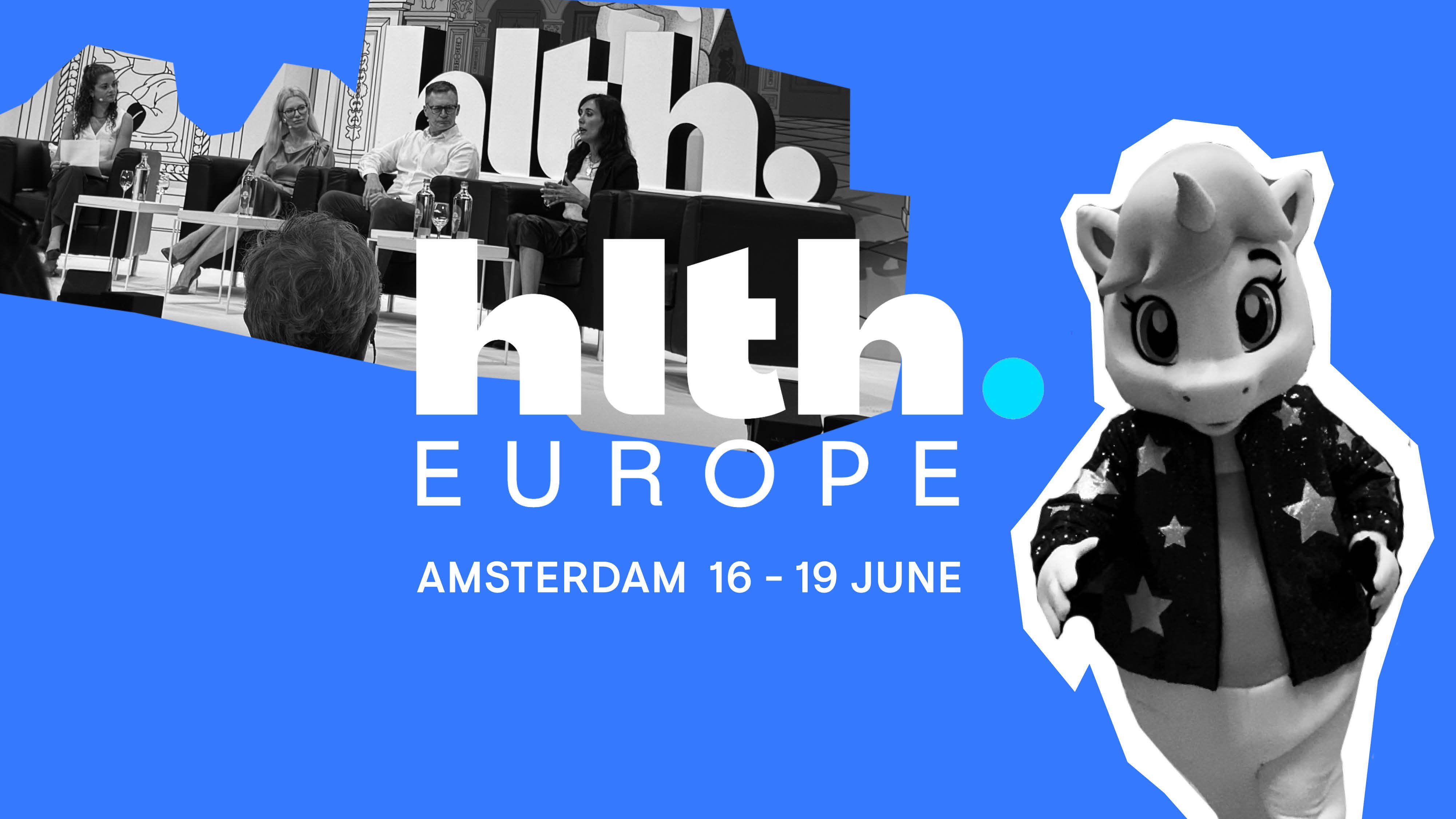HLTH Europe is the biggest health innovation event in Europe, this year featuring speakers as diverse as Google’s Chief Health Officer, NHS England’s new chair, Dr Penny Dash, innovators, VCs, entrepreneurs and thought-leaders in everything from space medicine to genomics and funding.
The sheer diversity and scale of this four-day festival of ideas means it’s a brilliant barometer for the biggest shifts and most salient trends in health.
The sheer diversity and scale of this four-day festival of ideas means it’s a brilliant barometer for the biggest shifts and most salient trends in health. Our biggest takeaways from HLTH 2025:
- Gender health gap. We’ve said this before and we’ll say it again: closing the gender health gap is not just a women’s issue, it’s in everyone’s interests. Neither is it a moral stance but an economic imperative. This was perfectly highlighted at HLTH Europe by Dame Lesley Regen, Women’s Health Ambassador, who stated that closing the gender health gap could save the UK economy £36bn per year. We need a massive shift from secondary into primary care in all areas and women’s health is ripe for this; women are much more likely to go into their GP than men, and they tend to go before they are sick, so we should be prioritising supporting via education on self-support, symptom awareness and routes to early intervention. This isn’t about spending more, it’s about pivoting spend onto awareness-raising, education, more specialist services and targeted interventions.
- Data. Every track and almost every speaker stressed the need for high quality data and systems interoperability to enable healthcare development at scale. Ensuring quality data isn’t just about how it’s collected either; everyone from investors to patients needs to be bought into the importance of data-sharing so it can be woven into all decisions, prioritised in investment strategies and realised in real settings. We were pleased to hear attention paid to ensuring inclusive data collection and analysis, too; inclusion is essential for quality care, innovation and closing the gender health gap, especially in training AI models.
- Patient empowerment and self-driven care. We can and must move from a patriarchal ‘fix me when I’m sick’ system to one of empowered patients-as-experts. As Google’s MD of Strategic Health Solutions Amy McDonough put it, “Consumers are going to drive healthcare in the future.” Whether just as custodians of their own care records or as experts on their own bodies courtesy of wearables and tracking, commentators at HLTH Europe opined that we, the patients, will go from passive bystanders to active drivers of our own health outcomes. This shift does introduce risks around an increasing divide between those who have the means – money, time, literacy, etc – to advocate for themselves, and those who don’t. Ensuring there is provision for all is another moral imperative that must be considered, so EHRs and tech don’t heighten an already steep class/health divide.
- Ambient listening. Much more than just useful tools, ambient listening in a healthcare context was lauded at HLTH Europe for its ability to streamline workflows, reduce admin burden (like note-taking or typing into EHRs), improve documentation accuracy, and free up clinicians to focus on human connection and reduce burnout. At the same time, important questions were raised around privacy, consent and data governance. This was a useful, practical take on the AI discussion that threatens to overwhelm conversation in 2025, and a clear signal of promising areas for investment and development.
- Challenging funding landscape. This came through loud and clear, with VCs handing out less money, making it harder to bring brilliant tech to market. The repercussions are broad, for example even less than before trickling down to female innovators and femtech – already a woefully underfunded space. Healthtech innovators wanting to win that sought-after funding need to carefully consider their business models, prioritising alternative funding paths to expedite returns for investors. This might include commercial models that target employers, private payers and insurers, over a model reliant on public funding or healthcare systems as priority customers. There’s also more need than ever for innovators to sharpen up their pitch if they’re to make it to the lucky 1% of all pitches that get the funding, which we’ll discuss in more detail soon.
Key themes that needed more exploration
There were several themes that didn’t get enough airtime at HLTH Europe, in the context of propelling innovation in health at scale:
1. Building trust. Trust is essential for uptake and engagement of digital health interventions but building it and maintaining it needs continual expert guidance, and more attention should be paid to this at a senior level at HLTH Europe and similar. There are clear examples to learn from when it comes to building trust and credibility which were briefly mentioned at HLTH Europe: Jaanika Merilo, Head of Digital Health and Care at Estonia’s Ministry of Social Affairs, cited a minuscule 2% opt-out rate in their national care record, which is a stunning testament to the trust the population place in their national health system. Trust-building strategies from health brands should major on using executive and clinical stakeholders in their public-facing communications, which a panel at HLTH Europe featuring Dr Bayo Curry-Winchell started to bring to life, too. More discussion on how this is achieved would provide actionable insights that are otherwise missing from the conversation.
2. Ensuring data opt-in. While data was a hot topic, the subject of actively stewarding data consent to ensure data opt-in was woefully undercooked. The importance of ensuring data opt-in to ensure the full functioning of a digitally-integrated care system can’t be overstated. We know from our research with NHS Digital that this requires a multi-pronged, carefully designed approach and we hope that future conversations at HLTH will also focus on how experience design, trust-building brand strategies and active communication about data can support data collection and reduce opt-outs.
3. Understanding Gen Z and Alpha. Gen Z and Gen Alpha aren’t just future patients or professionals, they’re already reshaping expectations around healthcare access, communication and values. Gen Z (now aged 13–28) will make up around 30% of the global workforce by 2030, potentially stepping into frontline and leadership roles far earlier than previous generations due to workforce gaps. Gen Alpha will follow closely behind, having grown up as digital natives with entirely different expectations around personalisation, prevention and mental health. Surprisingly, this generational shift barely came up at HLTH Europe – the programme included a focussed talk on one stage which is fab, but arguably it should have been a pressing concern in every track and with almost every speaker. Because if we’re not building systems, campaigns or services with Gen Z and Gen Alpha in mind now, we’re designing for a reality that’s about to disappear. Therefore a lack of focus on this cohort by the speakers of HLTH Europe, who were majority Gen X, elder Millennials and Boomers, should make us concerned that the people designing and innovating our care systems aren’t doing so with their feet in the shoes of the audience of tomorrow.
HLTH Europe 2025, in conclusion:
In summary, HLTH Europe is a fantastic, inspiring event attended by the great and the good in health from Europe and beyond. The line-up is impressive and the programming is diverse and generally brilliant. Our only build is that more focus on how all members of the health ecosystem can harness robust, evidence-led communication practices in their processes would dramatically improve the depth of the programming. Better strategies will build credibility, improve uptake of services, improve education and literacy, and ensure much-needed data opt-in – that’s the power of communication.




